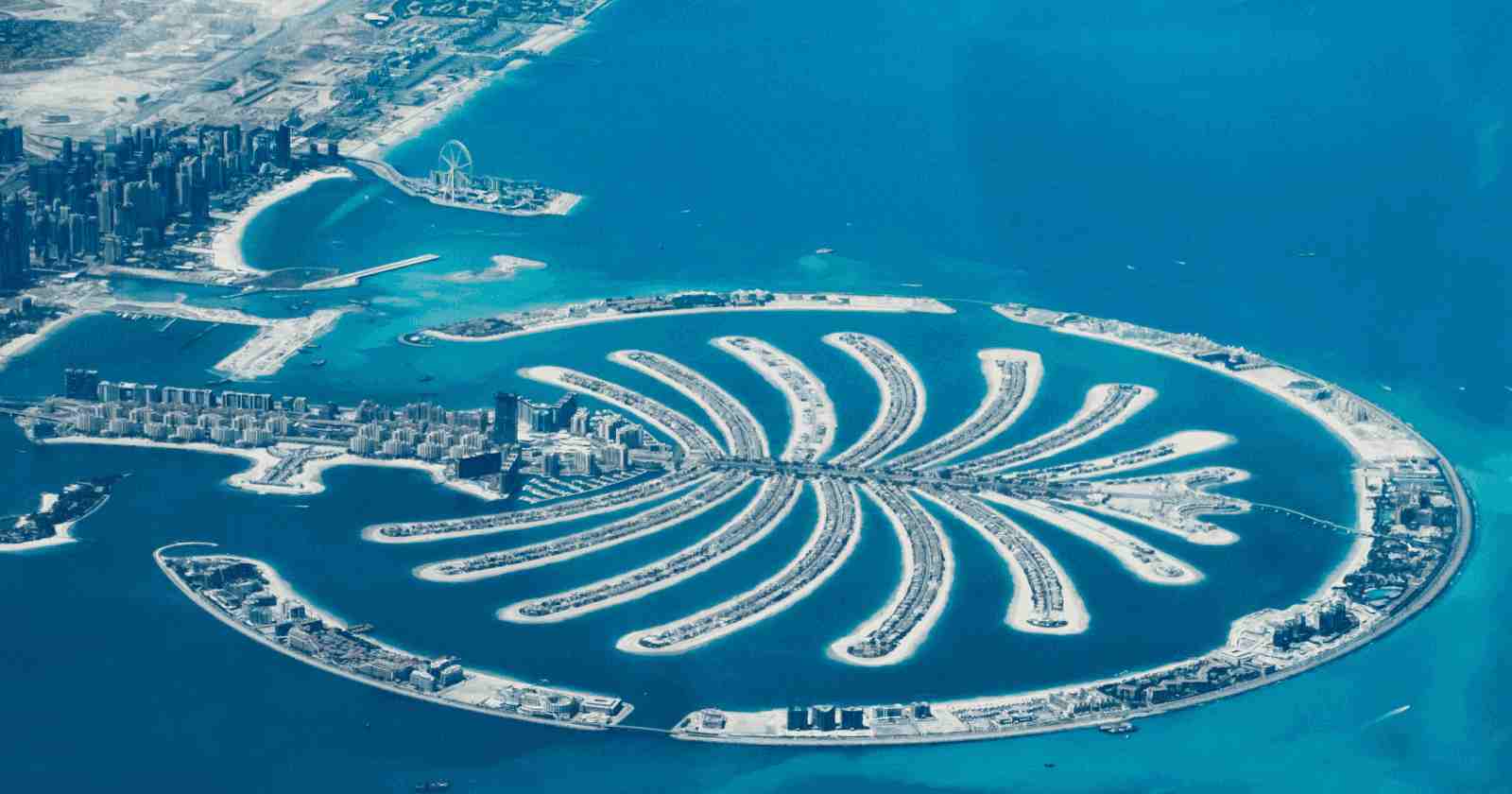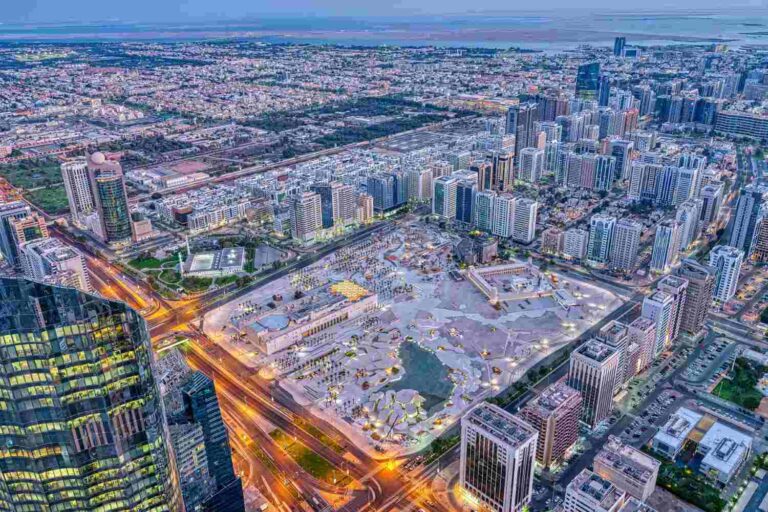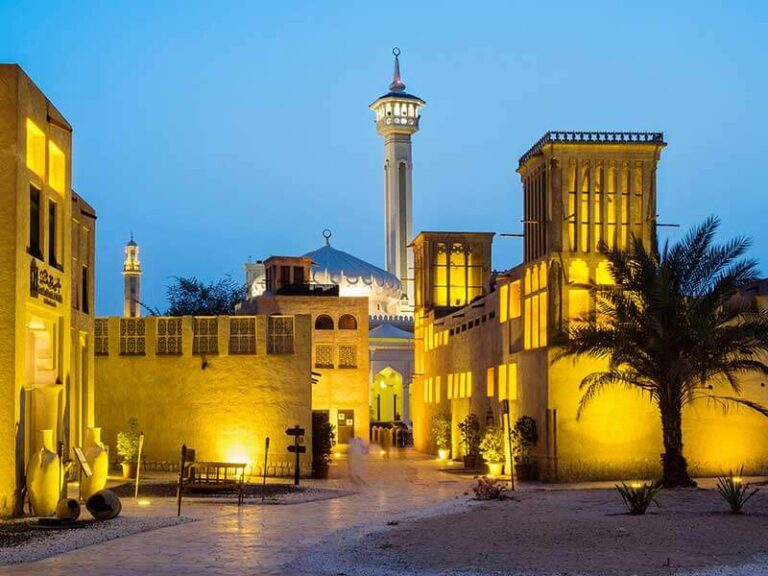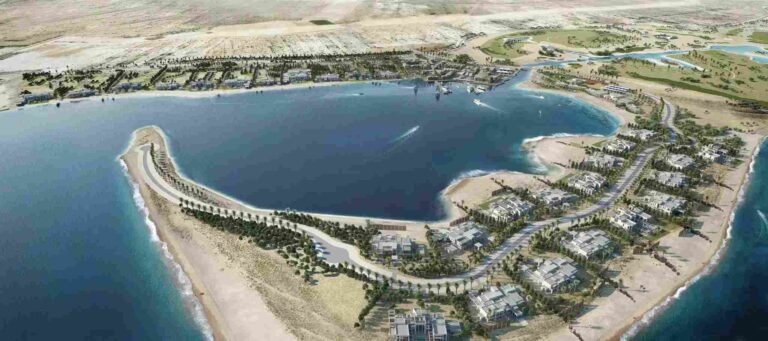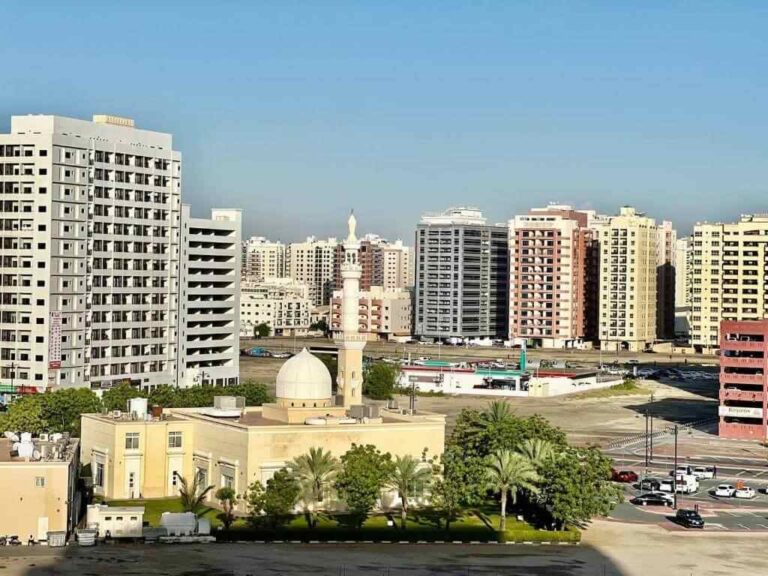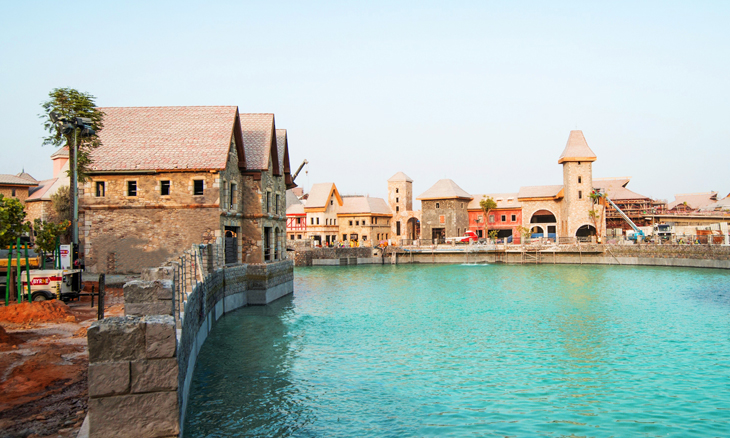Palm Jumeirah: Dubai’s Iconic Island Where Luxury Meets Innovation
From space, it resembles an elegant palm tree floating in the Persian Gulf. On land, it’s a world of luxury, architecture, and lifestyle few places on Earth can match. Welcome to Palm Jumeirah, Dubai’s most ambitious man-made island and one of the world’s most iconic engineering feats.
The Vision Behind the Palm
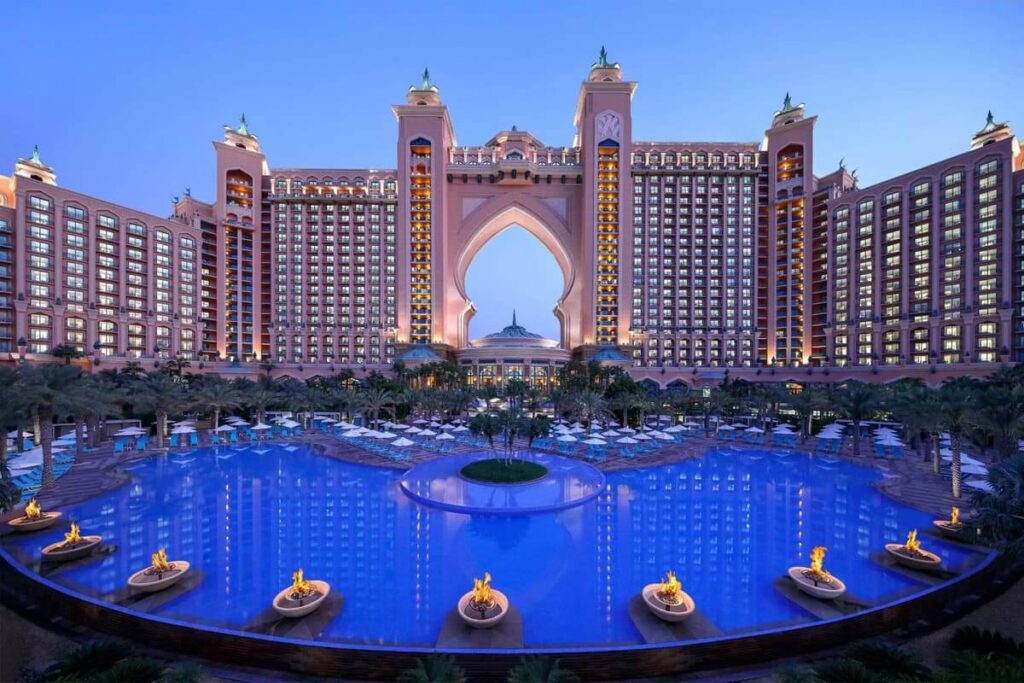
Constructed by Nakheel Properties and designed by the American firm Helman Hurley Charvat Peacock, Palm Jumeirah is part of the grand Palm Islands project, alongside the yet-to-be-completed Palm Jebel Ali and Palm Deira. This artificial archipelago was born out of reclaimed land dredged from the seabed, creating over 560 hectares (1,380 acres) of new land in a circular palm-tree shape, bordered by a crescent-shaped breakwater.
Each section of the island is purposefully designed:
- The Trunk: A vibrant mix of residential buildings, shopping malls, and dining destinations.
- The Fronds: Exclusive beachfront villas with direct sea access and private living.
- The Crescent: A 17-km stretch lined with upscale resorts and luxury hotels, such as Atlantis, The Palm, Jumeirah Zabeel Saray, and One&Only The Palm.
Living on the Palm: A Premium Address
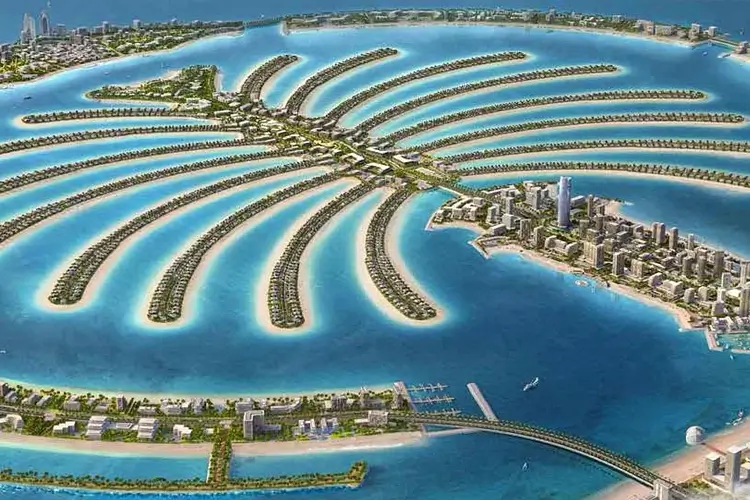
Palm Jumeirah is home to over 25,000 residents and is considered one of the most prestigious addresses in Dubai. Properties range from studio apartments to sprawling 10-bedroom villas, boasting architectural styles from contemporary to classic Arabic.
Property Highlights:
- Apartments: From 375 sq ft studios to 6-bedroom units spanning over 11,000 sq ft, with en-suite bathrooms, fitted kitchens, and spacious balconies.
- Villas: Ranging between 4,000–35,000 sq ft, these homes offer private beaches, stunning views, and elite living amenities.
Infrastructure & Transportation
Palm Jumeirah is connected to mainland Dubai by a six-lane bridge and served by the Palm Monorail, the first of its kind in the Middle East. The 5.4 km line runs from the Gateway Towers to Atlantis, stopping at key destinations like Nakheel Mall and The Pointe. Plans to extend the monorail to the Dubai Metro Red Line are also underway, enhancing connectivity for residents and tourists alike.
For drivers, access is straightforward via Sheikh Zayed Road or Al Sufouh Road, while buses and taxis provide efficient alternatives.
Nature, Environment & Sustainability
Palm Jumeirah’s creation involved significant environmental engineering. Initially, the crescent breakwater restricted natural tidal flow, causing stagnation. Engineers later introduced channels to reintroduce water circulation and oxygenation, which helped balance the marine ecosystem—though challenges remain, especially during the summer jellyfish influx.
Interestingly, during the 2020 pandemic lockdowns, reduced human activity saw dolphins returning to the waters around the Palm, hinting at nature’s resilience.
Lifestyle, Dining & Attractions
Whether you’re a resident or a visitor, Palm Jumeirah offers endless leisure opportunities:
- The Pointe: A bustling waterfront complex featuring shops, restaurants, and dancing fountains rivaling those at the Dubai Fountain.
- Palm West Beach & Boardwalk: Perfect for strolls, jogging, or beach club lounging with views of the Arabian Gulf.
- Club Vista Mare: A scenic dining destination over the water, offering seafood at Ibn AlBahr or Mediterranean cuisine at Ría.
- Skydive Dubai: For thrill-seekers, enjoy a tandem skydive with panoramic views of the entire island.
Global Attention & High-Profile Residents
Palm Jumeirah’s exclusivity attracts global elites. Notable property owners include:
- Grigory Anikeev (Russian politician)
- Mykola Zlochevsky (Ukrainian oligarch)
- Obaid Khanani (sanctioned Pakistani national)
- Members of the Aliyev family (Azerbaijan’s ruling elite)
While such high-profile ownership adds to the allure, it has also drawn global scrutiny over luxury real estate as a haven for controversial wealth.
Economic Impact & Urban Density
Palm Jumeirah was initially planned with 4,500 residential units, but that number increased to accommodate demand and rising development costs. This densification drew criticism from early buyers seeking more privacy, yet it helped fuel Dubai’s property boom and luxury tourism sector.
Despite reports in 2009 suggesting minor land subsidence, Nakheel dismissed these claims, citing no structural issues and highlighting the margin of error in NASA’s measurements.
FAQs About Palm Jumeirah
Is Palm Jumeirah free to enter?
Yes, entry is free. It’s an open residential district in Dubai, but attractions like resorts or clubs may have their own charges.
Can you walk around Palm Jumeirah?
Absolutely. The Palm Boardwalk and The Pointe offer pedestrian-friendly zones perfect for walking, jogging, and sightseeing.
Is Palm Jumeirah a good place to live?
Yes, it offers premium lifestyle amenities, direct beach access, fine dining, and excellent connectivity—ideal for those seeking a luxurious, self-contained community.
What’s the best way to see Palm Jumeirah?
Visit The View at The Palm for panoramic island views. Yacht tours and helicopter rides also provide unforgettable perspectives.
Can you swim at Palm Jumeirah?
Yes. Hotels, beach clubs, and private villas provide access to well-maintained beaches and swimming areas.
Is it possible to buy land or property here?
Yes, foreigners can purchase freehold property on Palm Jumeirah. Reach out to certified agencies or consult our real estate services on TheDubaiWeb.com for guidance.
Plan Your Visit with TheDubaiWeb.com
Whether you’re booking a luxury stay, exploring waterfront dining, or investing in elite real estate, Palm Jumeirah offers something extraordinary. At TheDubaiWeb.com, we bring you the most reliable insights, travel tips, and property expertise across Dubai’s iconic neighborhoods.
- Top 10 Dubai Night Beaches: Where to Enjoy the Sea After Sunset - January 10, 2026
- Quiet Beach Dubai Guide: Discover Peaceful Beaches Away from the Crowds - January 10, 2026
- Naif Police Station Dubai – Location, Services, Contact Details, and Complete Visitor Guide - January 7, 2026

